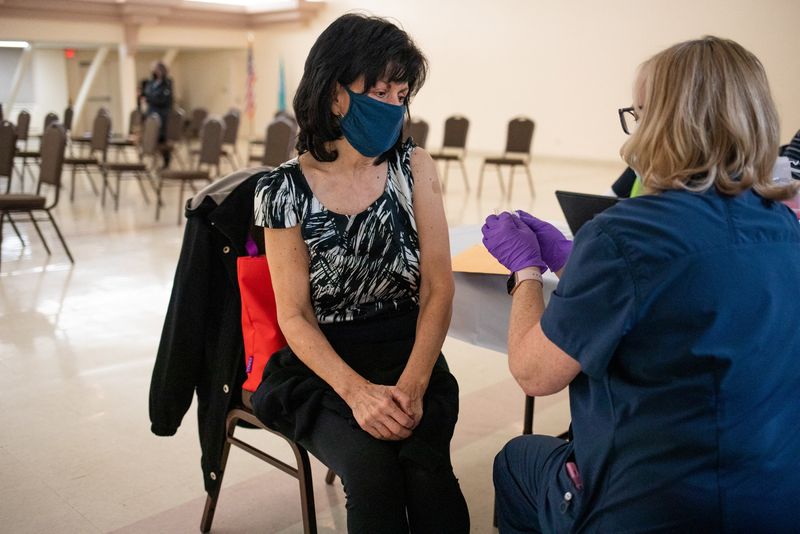By Ahmed Aboulenein and Susan Heavey
WASHINGTON (Reuters) -The United States is likely to start recommending COVID-19 vaccines annually, health officials said on Tuesday, as new boosters designed to fight currently circulating variants of the coronavirus roll out.
By the end of this week, 90% of Americans will live within five miles (8 km) of sites carrying updated vaccines, U.S. health secretary Xavier Becerra said at a White House briefing.
Officials said people could get the new boosters this fall or winter alongside their regular annual flu shots.
President Joe Biden said separately in a statement that for most Americans, "that means one COVID-19 shot, once a year, each fall."
White House COVID-19 Response Coordinator Dr. Ashish Jha said in the briefing that for "a large majority of Americans, we are moving to a point where a single annual COVID shot should provide a high degree of protection against serious illness all year. That's an important milestone."
U.S. Centers for Disease Control and Prevention (CDC) Director Rochelle Walensky said even with the seven-day average of COVID hospitalizations down 14% to 4,500 per day, annual shots could save thousands of lives.
"Modeling projections show that an uptake of updated COVID-19 vaccine doses similar to an annual flu vaccine coverage early this fall could prevent as many as 100,000 hospitalizations and 9,000 deaths, and save billions of dollars in direct medical costs," she said.
Top U.S. infectious disease expert Dr. Anthony Fauci said unless a dramatically different variant emerges, annual vaccines should offer enough protection for most people, but that some vulnerable groups might need more frequent vaccinations.
"We likely are moving towards a path with a vaccination cadence similar to that of the annual influenza vaccine, with annual, updated COVID-19 shots matched to the currently circulating strains for most of the population," he said.
The redesigned boosters, green-lighted by U.S. health regulators last week, aim to tackle the BA.5 and BA.4 Omicron subvariants, which account for over 88% and 11% of circulating viruses, respectively, Walensky said.
The so-called bivalent vaccines also still target the original version of the virus.
"For the last two years, this virus has continued evolving while our vaccines have stayed the same, but now we have a vaccine that matches the dominant strain out there," Jha said. "For the first time since December of 2020, these vaccines are vaccines that have caught up with the virus."
Regulators have so far backed COVID boosters for those aged 12 and older from Pfizer/BioNTech and Moderna (NASDAQ:MRNA)'s updated shot for those 18 and older..
Jha said it was not yet clear when they could be approved for younger children, but that there may be an update on the timing later in the fall.
He said the new vaccines will remain available for free. But because Congress has not provided enough COVID response funding, this comes at the cost of pulling other resources like personal protective equipment and at-home tests, leaving the national stockpile ill-equipped to deal with another surge in cases.
Becerra said there was enough vaccine supply for the fall campaign, but the future is uncertain.
"We may have the vaccines today for folks for this fall vaccine effort. We don't know what's coming next. We don't know what the next generation of vaccines will look like if we don't have the resources to continue that research going," he said.

His department last week said the government's vaccine and antiviral treatment supply would run out over the next year, meaning they would start being sold commercially sooner than previously expected.
The government also cited a lack of funding when it said Americans would no longer be able to order free at-home COVID tests from its COVIDTests.gov website.